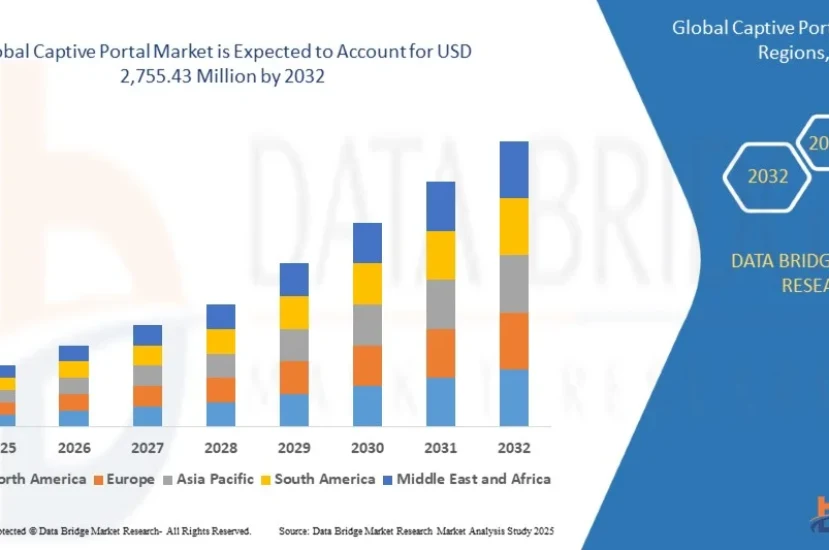Introduction
In today’s connected world, Wi-Fi networks are everywhere – in airports, hotels, coffee shops, schools, and offices. You’ve probably connected to a public Wi-Fi network and noticed that, before you could start browsing, a special webpage appeared asking you to log in, accept terms of use, or register. That webpage is known as a captive portal. Captive portals play a crucial role in managing access to Wi-Fi networks, ensuring security, compliance, and even marketing opportunities. In this guide, we’ll explore what a captive portal is, how it works, its benefits, common use cases, and best practices for setting one up.
Definition
A captive portal is a web page that users are automatically redirected to when connecting to a public or guest Wi-Fi network, before they can access the internet. It is commonly used in places like airports, hotels, and cafes to present login screens, terms of service, or payment options. The portal helps network administrators control access, authenticate users, and often collect user information or display advertisements.
What Is a Captive Portal?
A captive portal is a web page that appears automatically when a user connects to a public or enterprise Wi-Fi network. It acts as a gateway between the user and the internet. Until the user completes a required action – such as logging in, entering a password, or accepting terms and conditions – they are “captive” within the portal and cannot freely browse the web. You can think of it as a checkpoint that controls who can access a network and under what conditions. Captive portals are commonly seen in locations that offer guest Wi-Fi, such as hotels, airports, cafes, universities, hospitals, and corporate offices.
How Does a Captive Portal Work?
To understand how a captive portal functions, let’s look at the process step by step:
User Connects to Wi-Fi:
When a user selects a public or business Wi-Fi network, their device sends a request to access the internet.
Network Interception:
The network detects that the user is new or unauthenticated and intercepts their web request. Instead of forwarding them to the requested website, it redirects the request to a local web server that hosts the captive portal page.
Display of the Captive Portal Page:
The captive portal page opens automatically. This page might ask the user to:
Enter login credentials (username and password)
Provide contact information or register an account
Accept the network’s terms of service
Enter a voucher code
Log in via a social media account
Authentication and Access Control:
Once the user completes the required step, the portal authenticates them. If successful, the system removes the network restrictions and grants internet access.
Session Management:
The captive portal can also control how long the session lasts, what bandwidth is available, or which websites the user can access.
Types of Captive Portals
Captive portals can vary widely in design and purpose, but they generally fall into a few key categories:
Simple Acceptance Portals:
These portals only require the user to click an “Accept” button after agreeing to terms and conditions. They’re common in hotels or airports where access needs to be easy and fast.
Credential-Based Portals:
Used mainly in enterprises or educational institutions, these require users to log in with credentials such as a username and password. This helps maintain security and accountability.
Voucher-Based Portals:
Users receive a unique voucher or code that grants temporary or limited access. This is popular in cafés or event venues where time-based or data-limited internet access is desired.
Social Login Portals:
These allow users to log in using their social media accounts like Facebook, Google, or LinkedIn. Businesses often use these to gather demographic insights and enhance marketing efforts.
Payment-Based Portals:
Common in premium Wi-Fi services, these portals require users to pay for internet access before being granted entry.
Why Are Captive Portals Used?
Captive portals serve multiple purposes, combining convenience, security, and business value. Here are some of the main reasons organizations use them:
Access Control and Security:
By requiring authentication, captive portals prevent unauthorized users from accessing private networks. They also allow administrators to track who is using the network and when.
Legal Compliance:
In many regions, businesses offering public Wi-Fi must log user activity or display terms of use. A captive portal ensures compliance with data protection and privacy laws.
User Data Collection:
Captive portals can gather valuable user information such as email addresses, names, or social media profiles. This data can be used for analytics, remarketing, or improving customer experience.
Branding and Marketing Opportunities:
A captive portal is a great place to showcase your brand. Many businesses customize the login page with their logo, offers, and promotions, creating a branded Wi-Fi experience.
Bandwidth Management:
Administrators can allocate specific bandwidth limits or restrict certain types of traffic, ensuring fair usage and optimal performance.
Monetization:
Some venues charge users for premium access or display ads on the captive portal page, generating additional revenue.
Where Are Captive Portals Commonly Used?
Captive portals are used across various sectors, including:
Hospitality: Hotels and resorts use captive portals to provide guest Wi-Fi while promoting services or loyalty programs.
Airports and Transportation Hubs: Travelers can access Wi-Fi after agreeing to terms or purchasing internet packages.
Corporate Offices: Businesses use portals for employee authentication and visitor Wi-Fi management.
Education: Universities and schools require login credentials for student and faculty internet access.
Retail and Restaurants: Cafés, malls, and shops offer free Wi-Fi in exchange for user data or social media engagement.
Healthcare: Hospitals and clinics provide guest access while maintaining network security for medical systems.
Benefits of Using a Captive Portal
Implementing a captive portal offers several practical and strategic advantages:
Improved Security: Ensures only authorized users can access the network.
Better User Experience: Offers a smooth and branded login process for guests.
Legal Protection: Helps comply with privacy and data retention laws.
Marketing Insight: Captures customer data for targeted promotions.
Customizability: Can be tailored to fit business needs, from simple access pages to detailed authentication workflows.
Usage Control: Limits bandwidth and session time, reducing network congestion.
Challenges and Limitations
While captive portals are effective, they do come with a few challenges:
User Friction:
Some users may find the extra step annoying, especially if the login process is lengthy or buggy.
Device Compatibility:
Certain devices or apps may have trouble triggering or displaying captive portals properly.
Security Risks:
If not implemented correctly, captive portals can be exploited by attackers through phishing or spoofing attempts.
Maintenance Requirements:
Administrators need to regularly update authentication systems, SSL certificates, and legal disclaimers.
Best Practices for Setting Up a Captive Portal
To create an effective and user-friendly captive portal, consider these best practices:
Keep It Simple: Make the login or acceptance process fast and intuitive.
Use Secure Connections: Always use HTTPS to protect user data.
Ensure Compatibility: Test the portal on various devices and operating systems.
Customize Branding: Include your logo, colors, and messaging to reinforce brand identity.
Be Transparent: Clearly explain why data is collected and how it will be used.
Optimize for Mobile: Most users connect via smartphones, so design your portal for mobile responsiveness.
Comply with Regulations: Make sure your data collection and logging practices comply with local privacy laws like GDPR or CCPA.
Growth Rate of Captive Portal Market
According to Data Bridge Market Research, the size of the global captive portal market was estimated at USD 990.00 million in 2024 and is projected to grow at a compound annual growth rate (CAGR) of 13.65% to reach USD 2,755.43 million by 2032.
Learn More: https://www.databridgemarketresearch.com/reports/global-captive-portal-market
Conclusion
Captive portals are an essential part of modern Wi-Fi network management. They not only enhance security and compliance but also open up opportunities for marketing, monetization, and improved user experience. Whether you’re a small café offering free Wi-Fi or a large enterprise managing thousands of connections, implementing a well-designed captive portal can provide structure, insight, and safety to your network.




Leave a comment